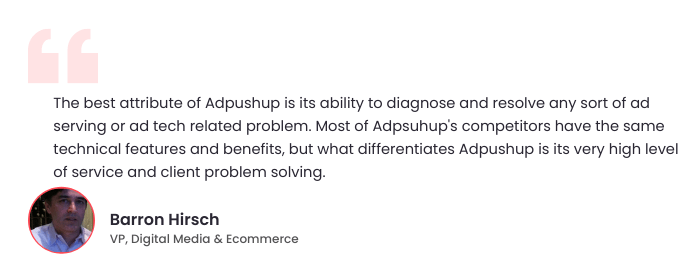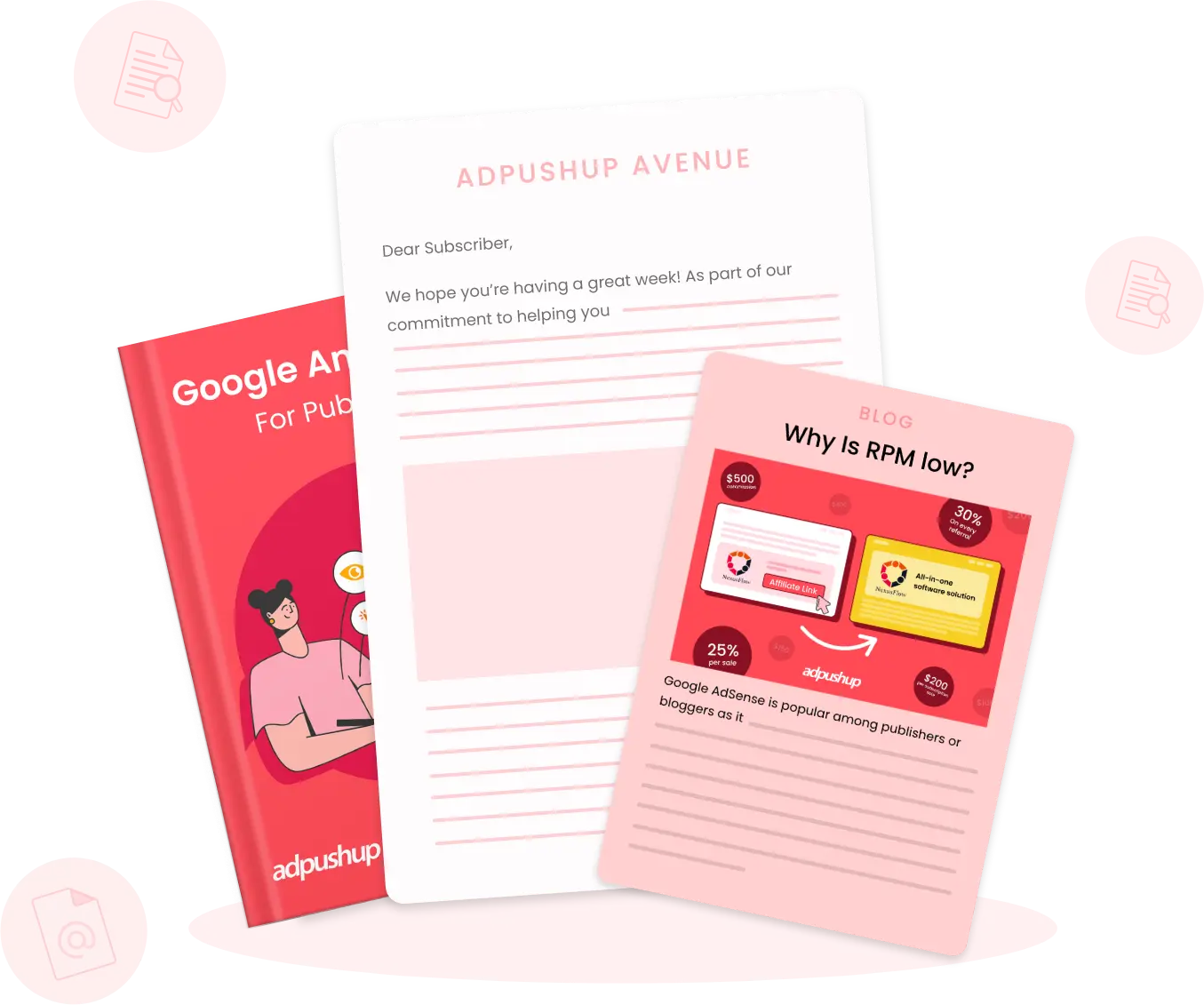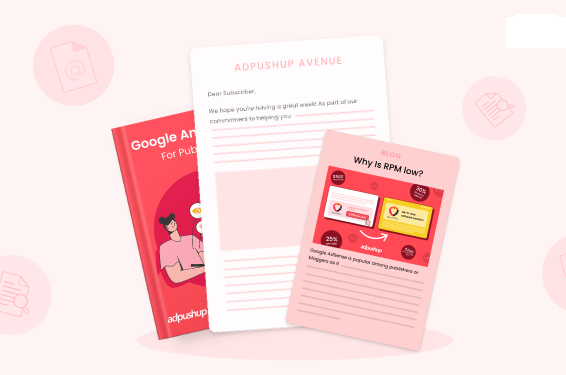Mobile marketing is a perfect way to promote products and services via mobile phones. Read our blog to discover what mobile marketing is, how it works, and why it is an integral part of the advertising industry.
In today’s world, where all of your favourite brands are just a tap away, and everything is in the palm of our hands, mobile phones have become the new normal. In fact, in 2024, mobile traffic dominated desktop traffic by 66.88%, indicating the growing influence of mobile on users on the internet. On top of that, mobile advertising is set to become a $185.6 billion industry by 2032.
Brands need to understand user behaviour and patterns to convert them into potential customers. Brands have started using various ways to reach out to the online audience directly, mobile marketing is one of them. Mobile marketing is a unique way of using mobile phones to target their users through personalized or location-based ads.
Let’s delve deeper into it.
What is Mobile Marketing?
Have you seen ads on your smartphones about the things you just Googled? That’s the secret of mobile marketing. Mobile marketing is a perfect strategy to promote products and services through mobile phones as it reaches directly to the targeted audience.
In simple words, it is a strategy to promote any goods or services by delivering personalized and location-based ads. Personalized ads are based on user preferences and behavior and location-based ads use GPS and other location data to send relevant offers to your mobile.
How does Mobile Marketing work?
The main goal of mobile advertising is to reach out to potential or existing customers through their mobile phones, let’s understand how it works.
- A brand identifies its target audience and starts targeting the user based on their behavior, interests, and location.
- Engaging Ads are designed and delivered to the relevant users.
- Mobile Ads are run across various channels :
- SMS and MMS messaging
- Mobile Apps
- Location Based Marketing
- Users interact with these ads and messages through clicks or other CTAs placed on these ads
- Brands track user behaviour and engagement metrics to understand user patterns and the effectiveness of the campaigns.
Mobile Marketing Vs. Traditional Marketing
Both of them are a powerful way to reach the target audience, but they offer distinct approaches to do so. Let’s find out which type of marketing suits you best.

1. Communication Style
Mobile Marketing:
Communication is a back-and-forth process. Mobile advertising is designed to engage users instantly, users can click, swipe, and install apps right away. Another amazing add-on benefit is personalization. Ads tailored according to the user data give them a unique experience increasing engagement
Traditional Marketing:
This approach is a one-way street. Through the traditional method, a message can only be broadcast to the audience without expecting any immediate response from them.
2. Targeting Capabilities
Mobile Marketing:
A super-targeted approach using demographics, behaviour and location to customize ads helps to target specific audiences in real time. Mobile marketing ensures that the right people see the right ads.
Traditional Marketing:
It focuses on a broader approach. This method doesn’t have the precision to target the audience using personalized messages. It casts a message to a wide audience in the hope of finding the relevant audience.
3. Cost
Mobile Marketing:
This mode of marketing is budget-friendly. It uses pay-per-click (PPC) or cost-per-install (CPI) models that allow you to pay only when a user takes an action. Using this method you can target ads very precisely, resulting in a positive outcome.
Traditional Marketing:
This form of marketing is pricey and very tough to crack. It needs a big upfront investment and once launched, making edits can be tough and costly.
4. Reach
Mobile Marketing:
Since mobiles are everywhere, mobile advertising provides global reach and is a perfect way to target audiences with different cultures and preferences.
Traditional Marketing:
This form of marketing provides local or mass market reach. TV commercials, radio ads, and print media can reach a lot of people in a specific area.
5. Measurability
Mobile Marketing:
With real-time analytics like click-through rates, conversions, engagement rates and number of app installs it is a super effective way to measure the performance of ads. Through this feature ad campaigns can be tweaked and customized for even better results.
Traditional Marketing:
As discussed above, this type of marketing targets a wide range of audiences so it becomes hard to track even the bare minimum. For example, it’s tough to know how many people saw a billboard or interacted with a radio ad.
6. Flexibility
Mobile Marketing:
Ad campaigns can be easily tweaked or paused without any extra cost.
Traditional Marketing:
Traditional marketing is less flexible. Once an ad gets printed or aired, changing it can be super costly and impossible. Imagine trying to rewrite a billboard that’s already up or re-editing a TV commercial that’s on air. Tough, right?
7. Formats and Engagement
Mobile Marketing:
Traditional Marketing:
Classics like TV and radio commercials, newspaper ads, direct mail, and billboards make traditional marketing more passive. It relies on ad recall and people being interested enough to act later.
8. Timing and Speed
Mobile Marketing:
Mobile marketing is all about speed. Campaigns can be launched immediately, audience reactions can be tracked instantly to the trends or events, and real-time adjustments to ads can be made. This flexibility makes it a super effective way to keep up with the fast-paced trends in the market.
Traditional Marketing:
Traditional marketing takes a bit longer to process and spread the word. Time is needed to plan, produce, and distribute ads. It is tough to get immediate feedback on the ad performance. Even though it’s great for building long-term brand awareness, it doesn’t have the same quick turnaround as mobile marketing.
9. Longevity
Mobile Marketing:
It usually has a shorter lifespan, but it makes an immediate impact. They’re great for prompting quick agendas to the consumer. This quick approach generates fast results and keeps the brand on top of trends.
Traditional Marketing:
Traditional marketing includes magazine ads and billboards. It tends to leave longer-lasting impressions. These ads can be seen repeatedly. Thus, they reinforce the brand message over time.
Got a minute? Take a look at how Adpushup delivered a 534% ad revenue uplift in 6 Months for CCNA7. If you want to learn how our technology can do the same for you, go ahead and request a demo.
Advantages of Mobile Marketing
To understand the science behind the importance of mobile marketing, we need to look at what benefits it offers. Using Mobile based advertising is super easy and convenient but what are the other things that make it a hot sell among marketers? Let’s have a look:
1. Wide Reach
This method allows brands to connect with billions of people. Using mobile phones is the new normal for everyone. Thus, brands have a better chance to reach their target audience anytime, anywhere. It offers direct contact with consumers
2. High Engagement Rates:
Personalised messages, push notifications, etc. can grab user attention right away. They are hard to ignore as they blend in with the platform’s look and feel as part of the user’s online experience, encouraging the audience to participate.
3. Personalisation:
With this type of marketing, marketers use location, user preference, and their behaviour to target using relevant campaigns. Each ad feels custom-made for each visitor, increasing the conversion rates.
4. Cost-Effective:
The best part about mobile marketing is that it is super cost-effective. In fact, push notifications, social media ads cost less than conventional marketing. Its pay-per-click (PPC) pricing model and better return on investment nature make it an easy-on-pocket marketing method.
5. Real-Time Delivery:
Campaigns are easy to launch and update using mobile advertising . It allows marketers to respond to real-time trends quickly. Moreover, it is a very convenient way to get the word out there whether it’s a sale, discount or any other news.
6. Location-Based Marketing:
Technology like geofencing, can help marketers to target users based on their location. Targeting the audience using their location for special offers gives a higher chance of user engagement as it is relevant to them, making a win-win situation.
7. Push Notifications:
Using push notifications to engage the audience is a catchy and direct way to grab their attention. It lets you communicate directly with the users who have subscribed for them on the app. It increases the brand visibility and engagement through a friendly nudge to the audience.
Disadvantages of Mobile Marketing
Like two sides of a coin, mobile marketing is not all sunshine and rainbows. There are some bumps along the road that marketers might come across while working with mobile advertising. Let’s have a look:
1. Privacy Concerns:
It is done using users’ personal data. The user might feel their privacy violated if they get targeted ads based on personal information. However, regulations like GDPR make it harder for marketers to collect and use user data. To target an audience it is necessary to find the balance and keep users’s trust in check.
2. Intrusiveness:
Poorly timed notifications or too many messages can easily annoy users, they can uninstall apps or even ignore the ads taking all the marketing strategy down the drain. Intrusiveness can make a brand look spammy or a fraud. Timing and frequency are the keys when it comes to spreading the word and keeping a brand reputation among the audience.
3. Small Screen Limitations:
Mobile Screens have limited space for visuals and texts. It is very tricky to deliver complex messages. Poor content or visuals can annoy users. Keeping the message simple and clear is the key!
5. Ad Blockers:
As the name suggests, ad blockers are the biggest threat to ad revenue. Many people use ad blockers to avoid intrusiveness and ad fatigue. To overcome this challenge, non-intrusive ads and valuable content is the only solution.
Mobile Marketing: Conclusion
Mobile Marketing is a perfect way to launch, manage, and customize marketing strategies and connect with relevant audiences on their mobiles, smartphones and other devices. Since people tend to spend so much of their time on mobile, understanding the basics behind marketing has become the need of an hour. Targeted ads based on user’s preferences, location, and browsing history help to increase engagement and user interaction with brands. The importance of mobile marketing can easily be reflected by the need to reach out to users in a fun, interactive, and personalized way.
Frequently Asked Questions on Mobile Marketing
We can understand mobile marketing as a promotional activity that takes place over smartphones, tablets, or any other device. It connects mobile users with various brands using push notifications, marketing emails, or advertisements. Unlike traditional marketing, it caters to a broad range of audiences by offering a direct and engaging experience.
1. SMS marketing
2. Social Media Marketing
3. Location-based marketing
4. Proximity marketing
5. In-app marketing
Finnish news providers started mobile marketing by offering free news headlines via SMS. This led marketers to explore and experiment with mobile marketing as a method.









